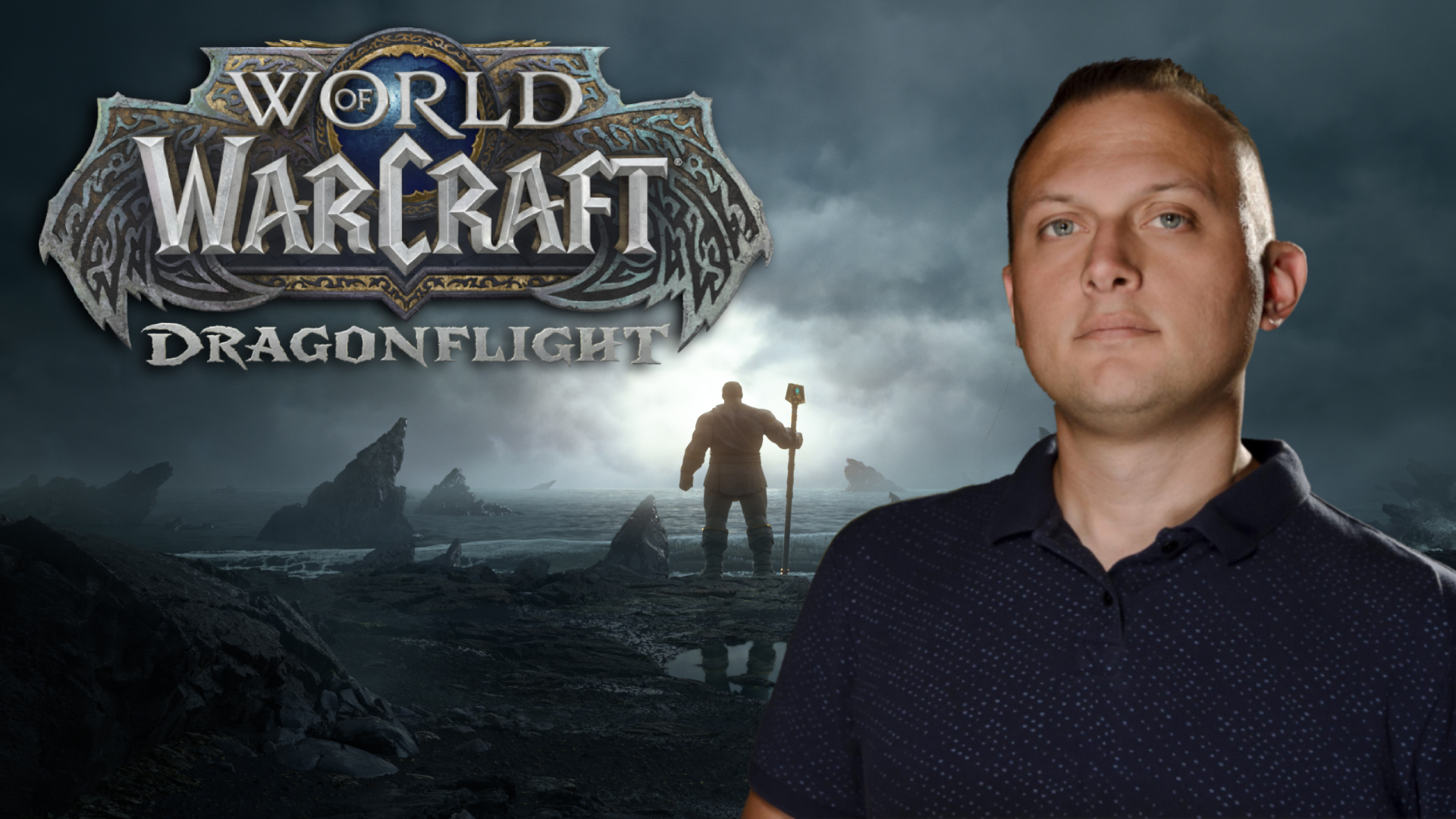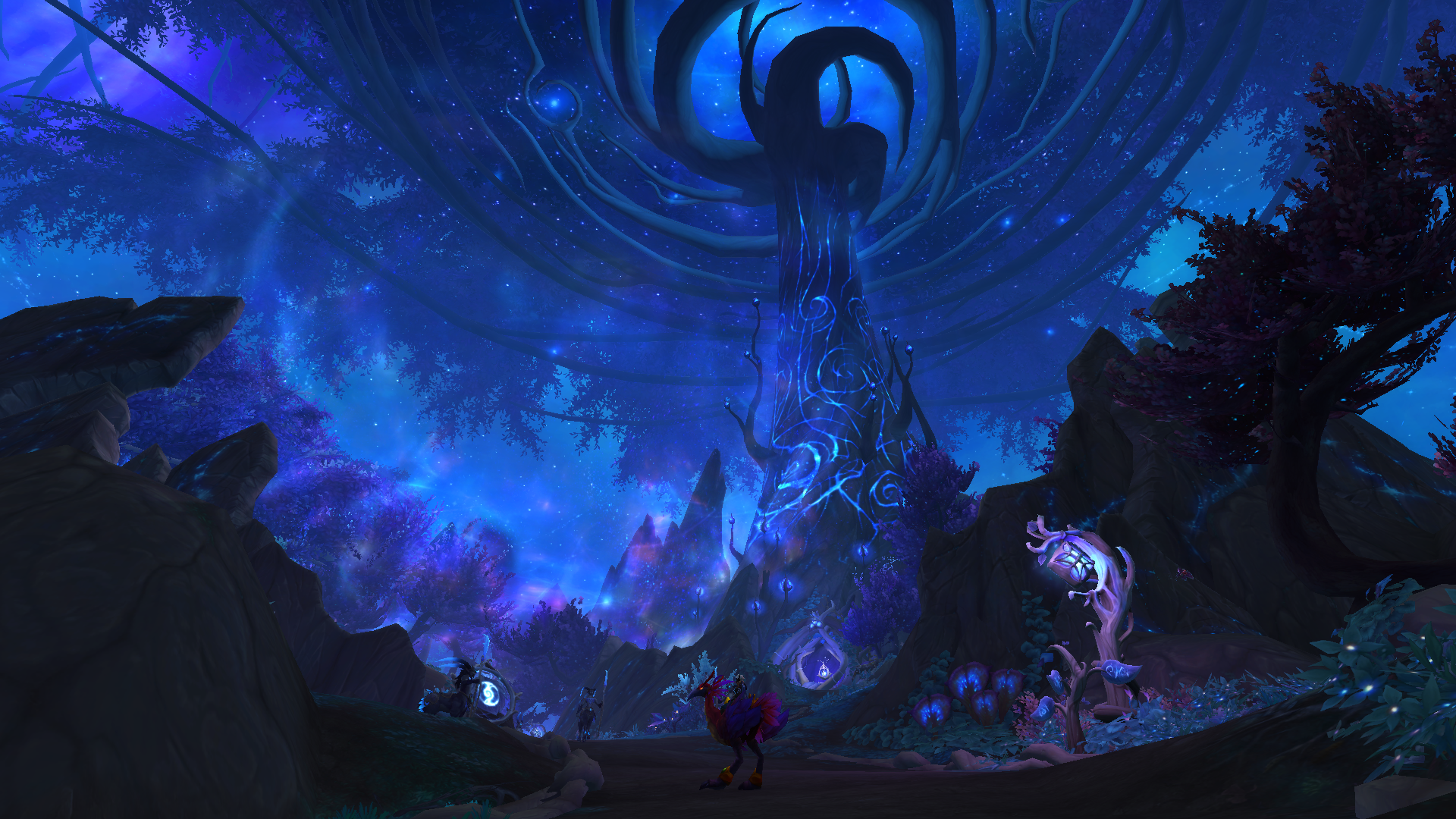WoW Dragonflight: Game Director Ion Hazzikostas discusses new talent trees and the fate of Covenant abilities (part 6 of 6-part interview)
Hazzikostas dives deep into the revival of in-depth talent trees and where our Covenant abilities will go

This is part six of a six-part interview with WoW Game Director Ion Hazzikostas.
Laptop Mag had the opportunity to sit down with Game Director of World of Warcraft Ion Hazzikostas and pose questions about the MMO titan’s upcoming expansion. After the reveal of WoW 10.0 last week, officially titled Dragonflight, we’re incredibly excited to dive deep into what we can expect out of its massive updates.
Hazzikostas and I discussed time-gated questlines, the Dracthyr Evoker’s abilities, the evolution of leveling through Chromie Time, the changes coming to transmogrification, and how old raids (particularly BfA) will be impacted by the player’s massive increase in power. This article covers Hazzikostas’ comments on the revival of talent trees and whether Covenant abilities will find their place within them.
- More: World of Warcraft Dragonflight's in-depth talent tree revival is a feature I've waited 10 years for
- Dragonflight's cinematic trailer boasts good vibes for a positive future
- Dragonflight's Dracthyr Evoker will finally let me play an adorable dragon
Blizzard Entertainment simplifies talent trees
After the launch of Mists of Pandaria in 2012, World of Warcraft stopped awarding talent points to players after a level-up. Instead, players received one point every 15 levels before hitting the maximum level cap of 90. Selecting a talent point became more significant as a result, but progression feels stifled and less exciting when there are only six talent points throughout a character’s lifetime. There was little to look forward to when hitting the next level, and player choice was limited ever since.

Blizzard Entertainment attempted to solve this problem by introducing secondary progression systems. 2016’s Legion featured Artifact Weapons, which were upgradeable and unique to each class. 2018’s Battle for Azeroth introduced the Heart of Azeroth, a necklace that could be similarly enhanced with a certain currency. And 2020’s Shadowlands had four Covenants, each of which provided unique abilities and its own upgradeable skill trees.
The quality of these systems varied, but the issue with each of them revolved around their sudden disappearance. Artifact Weapons stopped being relevant with the launch of Battle for Azeroth, the Heart of Azeroth became useless during Shadowlands, and Covenant abilities will be stripped from the players when Dragonflight arrives.
It’s frustrating to progress towards something over the course of two years only for it to be abruptly taken away. Fans have vocalized distaste in this cycle for years, and it seems like Blizzard Entertainment is finally listening with Dragonflight.
Sign up to receive The Snapshot, a free special dispatch from Laptop Mag, in your inbox.
The return of in-depth talent trees
Rather than introducing another progression system that will just disappear in two years, Dragonflight is bringing back in-depth talent trees that are intrinsically attached to a player’s character. Hazzikostas explained how this system works in further detail.
“There’s two types of talent points: there are class points and spec points,” He said. “The tree on the left is your class tree, which you will see no matter what your spec is. All druids have the same druid tree, all Mages have the same Mage tree. And then your Fire tree, you’ll only see if you’re a Fire mage. And your Restoration tree, you’ll only see if you’re a Restoration Druid.”

This is new for World of Warcraft. Throughout its 18-year lifetime, we’ve never seen talent trees split between two individual point pools. But how does the game decide when a player gets a talent for a specific pool rather than the other?
“As you level up, there is a schedule that we have laid out on our end of which type of point you’re gonna get at which level.” Hazzikostas continued. “I’m gonna make up numbers here, but you might, you know, at level 37 get a Druid point, at 38 get a Resto point, at 39 and 40 get Druid points, and 41 and 42 get Resto points. But the key here is, you know, over the course of your leveling journey, you’ll have a certain amount of each, but you’re choosing to spend them within separate ecosystems.”
With such a unique rendition of talent trees, one must question why Blizzard Entertainment structured the system this way. Without having that secondary progression system, it’s possible that the team felt talent trees needed a separation to give them the same impact. Using two individual trees to realize this system in a more permanent way could be great.

Hazzikostas explained why the team is utilizing separate ecosystems for Dragonflight. “I think that was one of our big learnings from seeing how the Classic talent trees played out,” he said. “And the question we kept running into is, well, there are right answers here. There are mathy answers, and players are always going to take the throughput option. The option that increases their damage per second, healing per second, survivability as a tank over that little bit of utility, that extra distance on Blink or reduced cooldown on interrupt if we put them as head-to-head choices. And so, let's not. Or even in the hybrid sense, right, there’s a cool fantasy we want to chase and recapture of the idea that you’re a Ret Paladin. But are you Ret Holy or Ret Prot? Well, if you could just be Ret Ret, I just wanna be really good at damaging things, you’re gonna do that. And so, we’re actually creating more interesting and nuanced decision spaces by separating the types of trees.”
Blizzard Entertainment wants to give each player control over their own class and put some power in their hands when deciding what they’ll be good at. However, like Hazzikostas said, most players just Google what’s popular with the professionals and don’t even bother thinking about it.

That’s bound to happen no matter how complex and deep a talent tree is (this is an issue that many games face), but putting power into the hands of players who actually care is important. I love in-depth talent trees, and seeing them disappear in 2012 was one of the many reasons I quit the game. Hopefully Dragonflight can reignite that excitement and make me spend hours contemplating how I want to build my characters.
Will Covenant abilities disappear?
As someone who got back into World of Warcraft with the release of Shadowlands, I have developed a fondness for my Covenant abilities. They’re a crucial aspect of my rotation, and some of them are just too fun to get rid of. In particular, Ardenweald’s Soulshape ability lets the player shift into a spectral version of some sort of animal. Not only is this useful for increased mobility, but it’s also super cute.

Dragonflight will be doing away with Covenant abilities, but I asked Hazzikostas if the team thought about ways to repurpose them. “Yeah, eagle eyed observers may have noticed the Convoke the Spirits icon in our sample Druid tree that we showed off,” he said. “That is accurate; that’s gonna live there, whether it’s Covenant abilities or even some Shadowlands legendaries. [These] are things we’re looking to roll into the talent system going forward. That’s something we’re going to be guided by player feedback on. What are the greatest hits there, what are the things that feel like they just are cool parts of the class going forward, and what are the things people are happy to leave behind. And that’s something that, once it’s all out there in alpha, we’ll be listening — and I’m sure we’re gonna be iterating on further as we go from there.”
Not every Covenant ability will find a home within the new talent system, but I’m hoping that the greatest hits live on. But even then, one issue is that Covenant abilities give players the opportunity to get their hands on certain powers that have nothing to do with their class. Soulshape is reminiscent of some sort of Druidic power, but it’s something I’ve loved using on my Rogue. There’s no way it could find its place in the Rogue’s arsenal, but perhaps Blizzard Entertainment could turn it into a toy without any of the mechanical advantages so I can still shift into a spectral owl or spider.

Self-described art critic and unabashedly pretentious, Claire finds joy in impassioned ramblings about her closeness to video games. She has a bachelor’s degree in Journalism & Media Studies from Brooklyn College and five years of experience in entertainment journalism. Claire is a stalwart defender of the importance found in subjectivity and spends most days overwhelmed with excitement for the past, present and future of gaming. When she isn't writing or playing Dark Souls, she can be found eating chicken fettuccine alfredo and watching anime.
